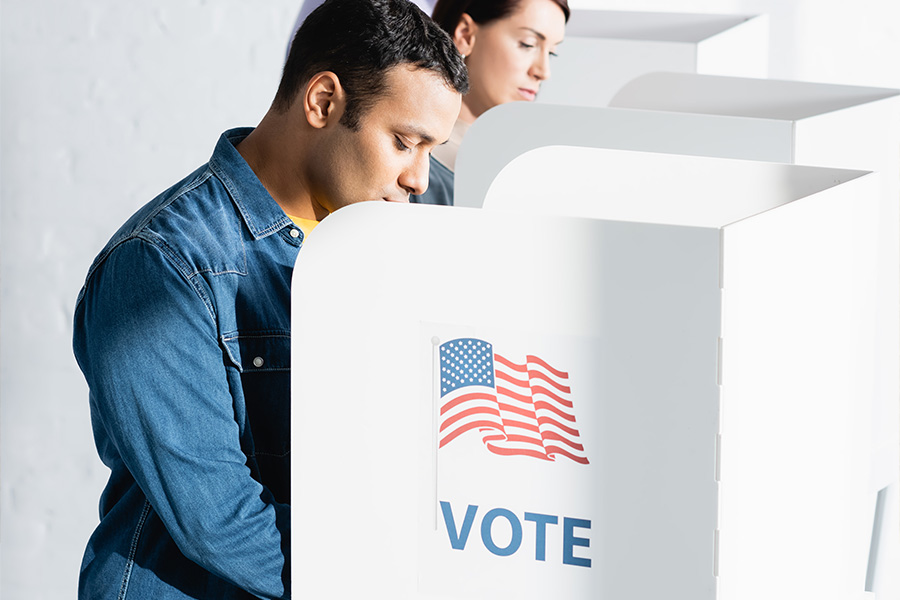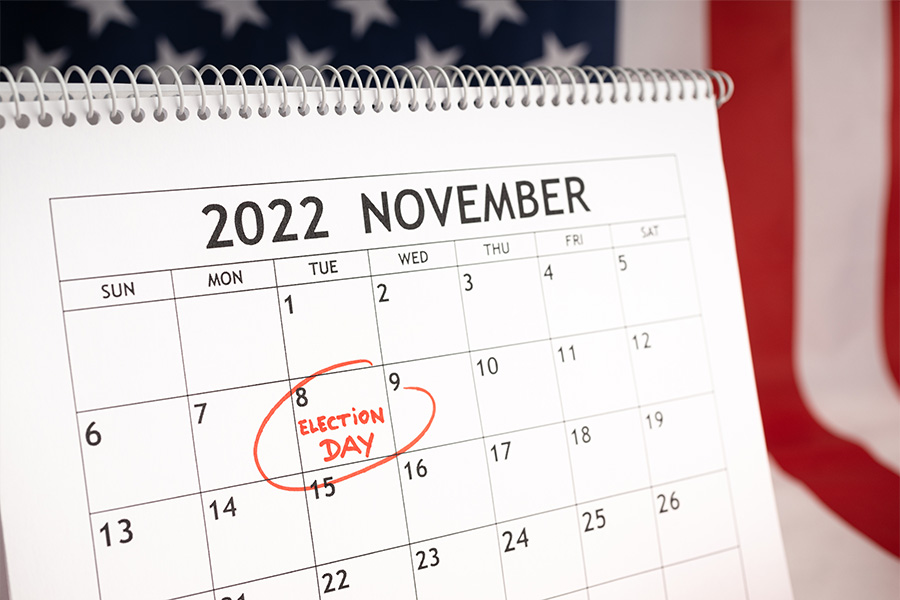On Tuesday, November 8, millions of Americans will cast their ballots in the 2022 midterm elections. Control of the U.S. House and Senate, as well as 36 governorships and the balance of power in 46 state legislatures, are all up for grabs.
The television ads have started, and the fall campaign season is officially in full swing. So, let’s take a closer look at the political landscape, historical trends, and national dynamics that could shape the outcome of this year’s election.
Today’s political landscape
By any measure, today, our nation is deeply divided along political fault lines. According to one poll, political polarization ranked third on a list of 20 issues most concerning voters. Recent Gallop data showed that Democrat (29%) and Republican (28%) party affiliation is virtually tied — with Independents (41%) leaning just slightly more Republican when casting their ballots. America’s political divide is perhaps most apparent in the U.S. Senate, where Democrats and Republicans each control 50 seats, with the tie-breaking vote going to Vice President Harris.
Historical trends
As writers at FiveThirtyEight noted at the beginning of this year, “One of the most ironclad rules in American politics is that the president’s party loses ground in midterm elections. Almost no president is immune.”
Recent polling seems to back up the electoral history books. Most state of the union polls at the beginning of September showed that a majority of Americans disapprove of President Biden’s job performance and believe — by even larger margins — that the country is headed down the wrong track. Political prognosticators staring into their crystal balls generally give Republicans a slight advantage to retake the House and at least a fighting chance to recapture a narrow majority in the Senate.
However, Democrats are increasingly optimistic about their ability to outperform historical trends and preserve unified control of the White House and Capitol Hill. At the beginning of September, Democrats saw President Biden’s approval ratings gradually ticking upward — above the critical 40% mark — and their party was closing the gap with Republicans on the “generic ballot” — whether voters chose a Democrat or Republican in their Congressional district if the election were held today.
Which party and which candidates have the most momentum crossing the finish line remains to be seen. The winning margins in a handful of battleground races that decide Republican or Democratic majorities might simply be too close to call on election night.
Economy takes center stage
“It’s the economy, stupid.” James Carville, advisor for former President Clinton, coined this now legendary catchphrase during the 1992 campaign. Recession and inflation were at the forefront of the national conversation at the time, much like they are today. Practically every poll shows that inflation is still the top issue on voters’ minds heading into the fall election.
Unease about the economy and kitchen table issues are usually bellwethers of political change. An ABC News/Washington Post poll showed “more than two-thirds (69%) of Americans think the nation’s economy is getting worse -- the highest that measure has reached since 2008.”
What’s at stake for biofuels?
Inflation and the economy certainly deserve top billing, but ongoing debates around fuel prices, climate, energy independence, and the future of transportation could also play meaningful roles in the next election. Fortunately, biofuels present politically-agreeable solutions for voters on both sides of the aisle, as well as those in the middle.
According to recent research, Democrats tend to place the most emphasis on the environmental benefits of bioethanol, including immediately reducing greenhouse gas and tailpipe emissions in the existing transportation fleet. Republicans tend to focus on securing America’s energy independence with homegrown biofuels while creating jobs and economic opportunities. With gas prices still stinging Americans’ wallets, both sides agree that bioethanol is the best source of savings at the pump.
In a day and age when America is so divided on seemingly so many issues, it’s nice to know that biofuels still earn steadfast support from candidates across the political spectrum.
Your vote is your voice
One vote can indeed make a difference. This year, we witnessed more than one major legislative battle decided by a single vote. As the world’s largest producer of biofuels, POET’s team is continually working to cultivate, maintain, and grow a strong coalition of champions on Capitol Hill and across the states — regardless of their party affiliation. Whether we like it or not, biofuel policy can get political, but that’s why it’s so important to continue to make your voice heard in the 2002 midterm election and beyond.








